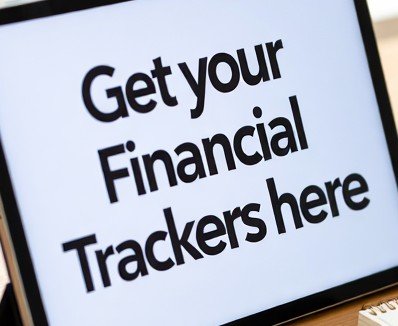
Budgeting is the cornerstone of financial success—but even with the best intentions, it’s easy to stumble.
Whether you’re just starting to budget or fine-tuning your system, knowing the most common pitfalls can help you stay on track, save more, and stress less.
Let’s break down the top 5 budgeting mistakes—and exactly how you can avoid them.
💡 Mistake 1: Not Tracking Actual Expenses
The Problem:
You create a beautifully detailed budget, but then life gets busy—and you stop tracking your actual spending.
Without monitoring real expenses, your budget quickly becomes outdated. Over time, you overspend, miss savings goals, and feel disconnected from your finances.
Why It Happens:
- You assume you’ll “just remember” your purchases.
- You underestimate small daily expenses (they add up fast!).
- You find tracking tedious without the right system.
The Solution:
Make expense tracking automatic and easy.
- Choose a method: Budgeting app, Google Sheets, Excel, or even a simple notebook.
- Record every transaction: No matter how small.
- Compare planned vs. actual spending monthly to spot patterns and adjust.
🛠️ Quick Tip:
Use a cloud-based budget tracker like Google Sheets for easy access from your phone or computer.
Set a daily 2-minute reminder to log purchases before bed.
💳 Mistake 2: Underestimating Irregular Expenses
The Problem:
You budget perfectly for rent, groceries, and bills—but then, surprise!
An annual insurance premium, holiday shopping, or car maintenance throws your budget into chaos.
Why It Happens:
- You think of your budget month-to-month only.
- You forget about annual or semi-annual expenses.
- You don’t create sinking funds for future needs.
The Solution:
Plan for irregular expenses like a pro.
- Create a “sinking fund” system: Set aside small amounts each month.
- List annual or semi-annual costs: Think memberships, gifts, taxes, and repairs.
- Spread the cost out monthly so you’re always ready when big bills arrive.
🛠️ Quick Tip:
Use a “Year-at-a-Glance” budgeting sheet to map out expected irregular expenses ahead of time.
📉 Mistake 3: Making a Budget That’s Too Restrictive
The Problem:
You aim for the perfect budget—cutting every luxury, slashing every fun purchase.
But too much restriction often backfires, leading to frustration, impulse splurges, and eventually ditching the whole plan.
Why It Happens:
- You treat budgeting like punishment.
- You believe spending on “wants” is bad.
- You ignore lifestyle needs for flexibility and joy.
The Solution:
Build flexibility into your budget from day one.
- Budget realistically: Cover your needs, obligations, and some wants.
- Use a ratio system: Allocate percentages for different categories.
- Expect the unexpected: Allow wiggle room for last-minute plans or small treats.
🛠️ Quick Tip:
Try the 80/20 rule—budget 80% of your income toward planned expenses and savings, and keep 20% free for personal spending and surprises.
🧾 Mistake 4: Forgetting to Adjust as Life Changes
The Problem:
You create a budget once—and never touch it again.
Meanwhile, your life changes: you get a raise, move apartments, welcome a new family member, or take on a new subscription.
Your static budget no longer reflects your reality.
Why It Happens:
- You see budgeting as “one and done.”
- You’re busy and forget to review.
- You don’t think minor changes matter.
The Solution:
Treat your budget as a living, breathing tool.
- Review your budget monthly (or when major changes happen).
- Update categories and amounts regularly.
- Celebrate and adjust for milestones: Pay raises, debt payoff, or new goals.
🛠️ Quick Tip:
Set a recurring calendar event for a “Budget Review Day” once a month.
Spend just 15 minutes reviewing your wins, challenges, and updates.
💼 Mistake 5: Not Setting Clear Financial Goals
The Problem:
Without a destination, your budget feels like a list of “don’ts.”
You save inconsistently, spend aimlessly, and eventually lose motivation to stick to your plan.
Why It Happens:
- You don’t link budgeting to personal dreams.
- You view budgeting as a chore, not a tool.
- You haven’t defined what success looks like financially.
The Solution:
Turn your budget into a goal-getting machine.
- Define your goals: Emergency fund, debt-free journey, home down payment, vacation, etc.
- Break big goals into smaller milestones.
- Visualize your progress to stay motivated.
🛠️ Quick Tip:
Add a Goal Tracker tab or section to your budget sheet.
Watch your savings grow or debts shrink with satisfying visuals!
📈 How to Build a Better Budget Today
Budgeting doesn’t need to be complicated—it just needs to be consistent, flexible, and aligned with your life.
Follow these simple steps:
✅ Track real expenses.
✅ Plan for both regular and irregular costs.
✅ Build flexibility and joy into your spending.
✅ Update your budget as life evolves.
✅ Set and pursue exciting financial goals.
🔥 Ready to Level Up Your Budgeting Game?
Don’t reinvent the wheel!
Grab our professionally-designed budget tracker templates—built to help you:
- Avoid common budgeting mistakes
- Track expenses automatically
- Set goals and monitor progress
- Stay consistent month after month
👉 Explore Budget Trackers Here
Take control of your money.
Design your future.
Budget better—starting today.


